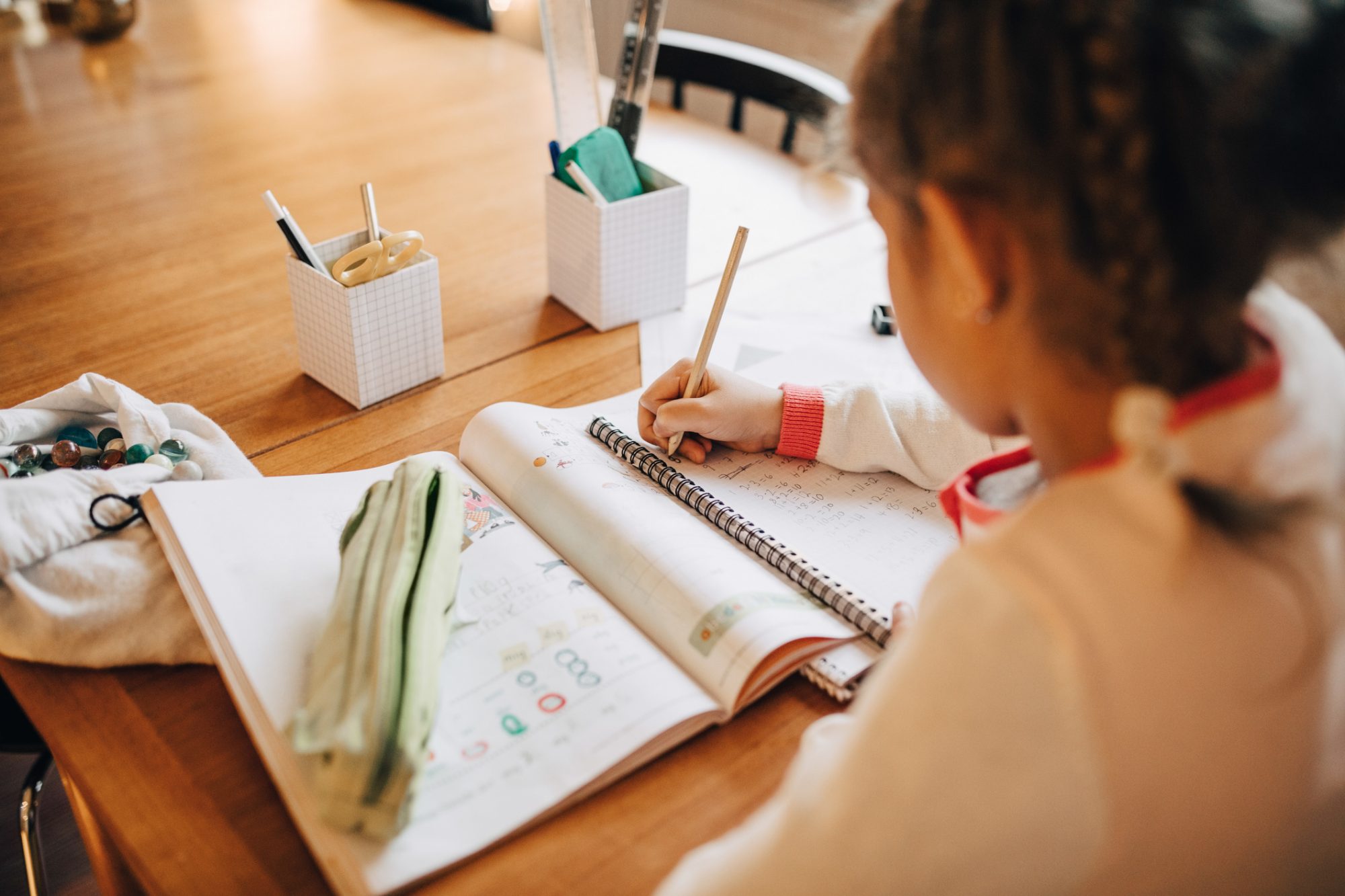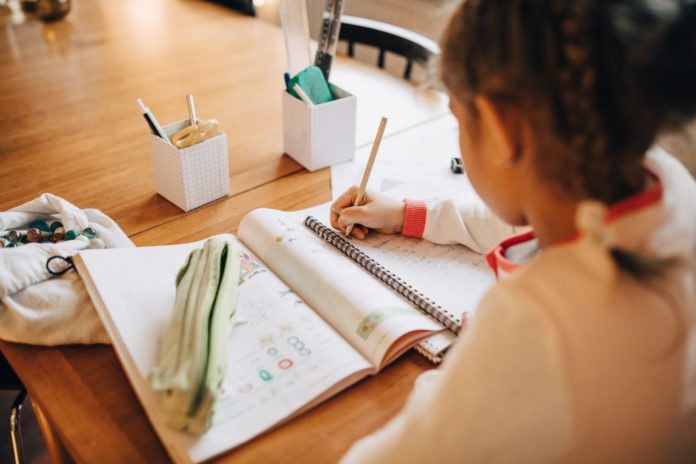
According to the National Center for Learning Disabilities, one in five American children has learning and attention issues. Parents may suspect that their child has a learning disability if they struggle with reading and writing, avoid school, and have difficulty communicating.
Here's your guide to different types of learning disabilities, with advice for diagnosis and interventions.
Signs of a Learning Disability in Children
Many children with learning disabilities are extremely smart. In fact, they often play on their strengths to hide certain difficulties, like using an exceptional auditory memory to avoid reading or taking notes. But signs of a learning disorder usually appear before children are expected to read and write.
If you notice your 3- to 5-year-old has difficulty rhyming, singing the alphabet song, or pronouncing words (especially when compared to other children their age), they might have a learning disability. Here are more red flags for learning disabilities in children:
Although these signs may indicate your child has a learning disability, you should first rule out visual impairment, which may also cause reading difficulties. Have your child evaluated by a developmental optometrist to make sure glasses aren't the solution, and always seek a professional opinion.
Types of Learning Disabilities in Children
"Learning disability" is a general term used to describe a variety of learning disorders. There are many different types of learning disorders—including the six outlined here—and it's possible for a child to have more than one.
Dyslexia
Contrary to popular belief, dyslexia is a language-based disorder—not a visual problem that causes children to reverse letters. "There is a direct relationship between spoken language and a student's ability to read and spell," says Lois Brady, a speech and language pathologist and author of Apps for Autism. "Individuals with dyslexia may have challenges with reading, spelling, and writing in conjunction with challenges in both understanding and expressing language. Such challenges may be severe or subtle and difficult to recognize," Brady adds.
According to Sally Shaywitz, M.D., the co-director of the Yale Center for Dyslexia and Creativity and author of Overcoming Dyslexia, reading disabilities are estimated to make up at least 80 percent of all learning disorders, and boys are more frequently diagnosed with dyslexia. The reason may be that girls tend to sit more quietly in their seats while boys often have behavioral problems that draw attention to learning disabilities.
Dyscalculia
Dyscalculia refers to difficulty with mathematics, such as computing, remembering math facts, and learning time and money concepts. The signs of dyscalculia change over time. Very young children may struggle with learning to count; school-aged children may reverse numbers and misalign columns. This type of learning disability affects functional skills such as playing board games, counting money, or measuring things.
Dysgraphia
"Dysgraphia refers to difficulty with the task of writing," says Beverly H. Moskowitz, D.O.T., CEO and president of Real OT Solutions, Inc. Handwriting is a complex process that involves processing information, putting thoughts on paper, and coordinating vision and pencil movements to form letters and words. "Children with dysgraphia struggle to organize letters, words, and numbers on a page. As a result, a written page may be seen as illegible handwriting, a mixture of letter cases, and/or a disorganized jumble of thoughts, syntax, grammar, and cohesiveness," Dr. Moskowitz says. Children with this type of learning disorder may also struggle with other fine motor skills and spelling.
Dyspraxia
Dyspraxia is characterized by difficulty with fine motor skills, such as controlling a pencil, grasping scissors, and hand-eye coordination. Parents may observe early signs of dyspraxia in a baby who doesn't imitate waving and pointing. Dyspraxia also affects gross motor skills, such as the coordination to ride a bike or play sports.
Auditory Processing Disorder
Children with auditory processing disorders struggle with interpreting auditory information related to language development and reading. Parents and teachers might observe difficulties with discriminating similar sounds and words, following directions, and distinguishing important sounds (such as the teacher's voice) from background sounds (such as paper crinkling).
Sensory Processing Disorder
Learning disabilities affect the brain's potential to take in information, process it, and use it in a functional manner such as reading, writing, or following directions. Because of differences in brain wiring, "children with learning disabilities often have sensory processing issues that compound their difficulties," says Lindsey Biel, an occupational therapist and co-author of Raising a Sensory Smart Child. "Uncomfortable experiences such as hypersensitivity to noise, the glare of overhead classroom lighting, 'scratchy' clothing textures, and even the smell of classmates or school supplies can make focusing and concentrating quite difficult," Biel says.
Visual Processing Disorder
With visual processing disorders, people might struggle with interpreting visual information related to reading, writing, and math. They might, for example, have a problem discerning visual similarities and differences (for example, in words or patterns), as well as finding items on the table or words on a page because they have poor visual figure-ground discrimination. Other signs of a visual processing disorder include difficulties sequencing symbols, words or images, and spelling.
NOTE: Many children may have both a learning disability and Attention Deficit Hyperactivity Disorder (ADHD), but although these disorders share similar features, ADHD is not a type of learning disability.
Diagnosing a Learning Disability
Teachers typically offer a referral for educational testing to understand why a student isn't working up to their potential. Usually the discrepancy between a student's expected achievement (such as reading at grade level) and actual academic performance is a hallmark of a learning disability.
Different evaluations can diagnose specific learning disabilities. Parents may also choose a private evaluation by a neuropsychologist, a professional who is qualified to provide a diagnosis. A speech and language pathology (SLP) evaluation can diagnose dyslexia or an auditory processing disorder, along with an audiologist. Also, an occupational therapy evaluation may indicate dyspraxia, dysgraphia, or a visual processing disorder.
Although developmental or learning challenges may be observed in younger children, learning disabilities are typically identified in school-aged children when academic demands increase and skills are closely monitored.
Getting Interventions for Learning Disabilities
Learning disabilities vary in terms of severity, and they affect sensory systems (like visual, motor or auditory) and functions (like speaking, reading, or writing). Parents who notice their child struggling to learn should ask their school to provide comprehensive testing by a team composed of a psychologist, occupational and physical therapists, a speech language pathologist, and an educational specialist. They can also have their child privately evaluated—typically by a neuropsychologist—for a second opinion.
A team approach to interventions may best address the child's complex learning needs. Speech and language pathologists can provide classroom strategies and direct treatments to improve articulation, reading comprehension, and the ability to distinguish sounds. "Occupational therapy services can help normalize the child's sensory experiences by increasing his or her underlying capacity to process sensory input and by making minor 'sensory smart' modifications to tasks and environments," Biel says.
According to Dr. Moskowitz, "to compensate for this unique visual perceptual or language-processing problem, school-based occupational therapists may collaborate with the classroom teacher to develop three approaches to help kids: accommodations (exploring keyboard alternatives to handwriting), modifications (allowing oral instead of written reports), and remediation (skill training with visual cueing or self-monitoring.)" It's important that early identification and interventions help children reach their potential.













